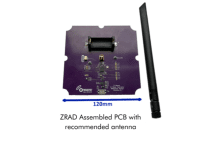
Among the numerous normal processes of ageing, cognitive decline is one, that often makes joints stiffer, arteries hardened and most importantly the brain becomes less supple than it used to be. In simple words, cognitive decline is defined as when your brain’s learning or memorizing capacities have deteriorated from before. Whereas, cognitive impairment is what can be the result of an increased level of cognitive decline from a different source. As ageing is inevitable, so is cognitive decline, at a certain point in life. However, researches are being done to determine if a healthy person is showing signs of a potential health risk, by efficiently tracking behavioural changes.
Gina Sprint, PhD in computer science from Washington State University(WSU), an assistant professor of computer science at Gonzaga University’s School of Engineering and Applied Science, is researching the use of smart home devices in monitoring people with cognitive decline. Along with other researchers from WSU, Sprint, the co-author of the study “Behavioural Differences Between Subject Groups Identified Using Smart Home and Change Point Detection” in the IEEE Journal of Biomedical and Health Informatics, created an algorithm called “Behaviour Change Detection for Groups(BCD-G). The main purpose of the algorithm is to analyze behavioural patterns of residents, over time, using smart home devices. Variations of the work are taking place at the WSU Center of Advanced Studies in Adaptive Systems. The principal investigator of the smart home research is Diane Cook, PhD, a Regents Professor, Huie-Rogers Chair Professor in the WSU School of Electrical Engineering and Computer Science. The other author of the study is Roschelle Fritz, who is a PhD and an assistant professor of nursing at WSU Vancouver.
Fourteen volunteers were monitored while doing everyday chores in their homes for a month. Out of them, seven had cognitive impairments such as dementia, and the rest seven were healthy individuals of the same age compared to the others. Using the BCD-G algorithm and smart home devices, the study helped to measure the differences in behavior between the healthy group and the one with cognitive impairment. “The goal was to help predict if a major health event was starting to take place”, Sprint says. The BCD-G study showed that the healthy group moved about twice as fast in their homes. On the other hand, the participants with cognitive impairment are found to exhibit higher vulnerability in their time spent on regular activities. Also, the group with cognitive impairment displayed larger behavioral differences than the healthy group did. BCD-G algorithm has considerable potential to help physicians understand whether someone is improving or deteriorating. This is mainly because it efficiently monitors the changes across time points. To ensure the participants a less intrusive way of monitoring, ambient sensors like motion sensors, door sensors, and temperature sensors are installed in individuals’ environments. The data garnered from the volunteers comprise detailed information about their daily lives and various interactions within the home, most of which are quite sensitive.
With plans of continuing her research with her associates to expand the BCD-G algorithm and extend the research to help improve patients’ health and well-being in real time, Sprint says, “I think a next step is trying to get this into an online environment where you’re streaming the data and making predictions in real-time that are actionable.”















